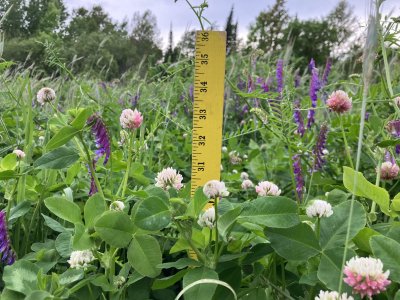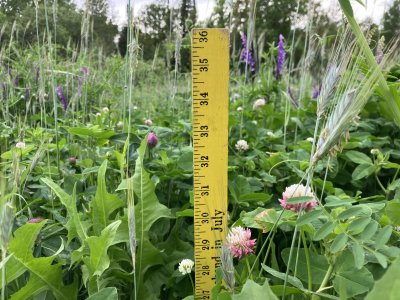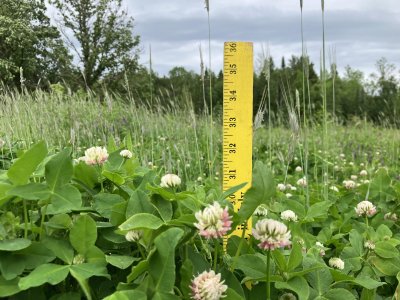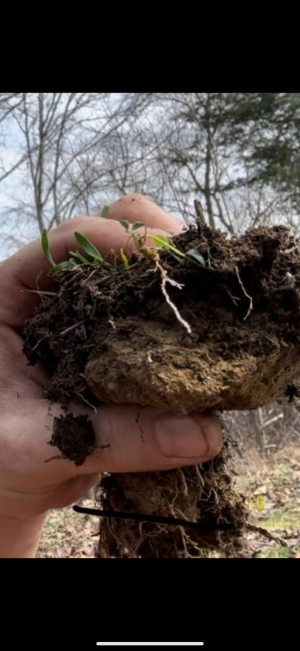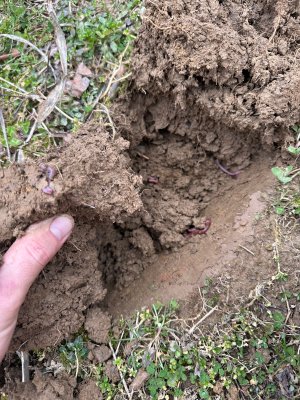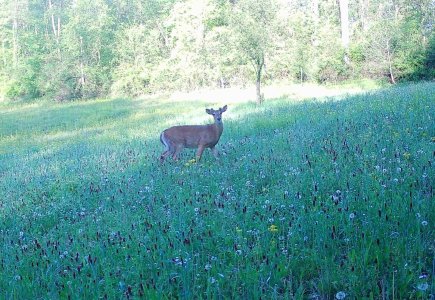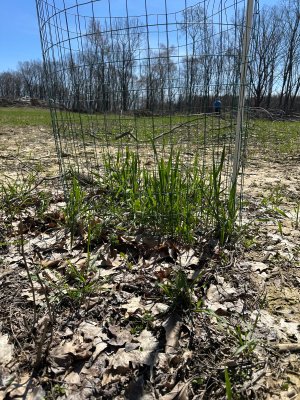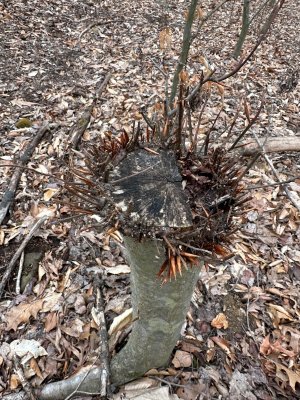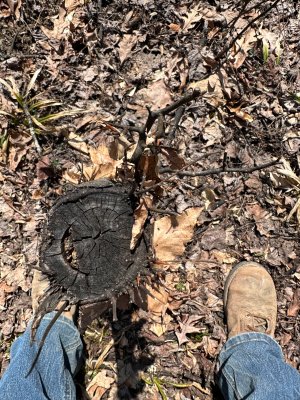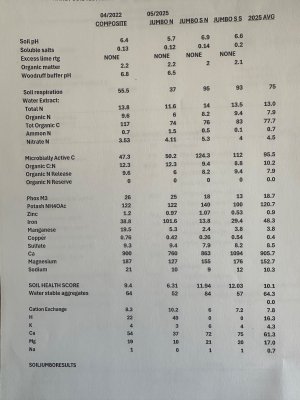SD51555
5 year old buck +
I'm not worried about any of the nutrients. Here's the issue with soil tests and data. They are snapshots of what is available at that moment. The conventional soil test does not measure living soil's ability to free up nutrients from residues and organic matter as the season goes along. And it shouldn't because you can't always count on that in an annual fallow system.
I pulled those cores on May 4th. It was still cold. There is no mineralization going on when the soil is cold coming out of winter. There is no K problem. I couldn't have grown the biomass I did without the K. I'd be stunned if there wasn't upwards of 800 lbs of K20 equivalent in my standing residue. You just cant' grow that much biomass without the nutrient capital.
On the micros, those will come. Most of those micro nutrients don't require 4 ppm for the entire season. If I can mineralize 1ppm/month, it'll be there. Once it warms up, the microbes will go into hyperdrive eating 20,000 lbs/ac of balanced C:N biomass above and below ground and poop out mountains of soluble nutrients. I don't worry about deficiencies. If I can't see one, it isn't there. They will show themselves in stunted or discolored plants.
This is the big difference between biological systems and systems that see a hard fallow every year. If you spray or disc every season, you upset and reset that entire system. This is why you get purple grains and yellow and purple brassicas. When my stuff comes up, it's always green. There is no purple or yellow period, and no exposed dirt. That's the other side of all of this, covered soil is cool and moist soil. When it's cool and moist, it operates at peak efficiency, even on low to no moisture. There are limits to that of course, but a balanced biological system with a good coat of residue will always outperform an annual fallow and pellet fertility system when conditions get harsh.
Check out this article just on the power of earthworms alone. This doesn't count the immense amount of root exudates from the living plants all season. This is how I say I can produce $100,000 of worm castings per acre. Even when I was pulling my cores, half of them had worms come up in the core.

 worldagriculturesolutions.com
worldagriculturesolutions.com
I pulled those cores on May 4th. It was still cold. There is no mineralization going on when the soil is cold coming out of winter. There is no K problem. I couldn't have grown the biomass I did without the K. I'd be stunned if there wasn't upwards of 800 lbs of K20 equivalent in my standing residue. You just cant' grow that much biomass without the nutrient capital.
On the micros, those will come. Most of those micro nutrients don't require 4 ppm for the entire season. If I can mineralize 1ppm/month, it'll be there. Once it warms up, the microbes will go into hyperdrive eating 20,000 lbs/ac of balanced C:N biomass above and below ground and poop out mountains of soluble nutrients. I don't worry about deficiencies. If I can't see one, it isn't there. They will show themselves in stunted or discolored plants.
This is the big difference between biological systems and systems that see a hard fallow every year. If you spray or disc every season, you upset and reset that entire system. This is why you get purple grains and yellow and purple brassicas. When my stuff comes up, it's always green. There is no purple or yellow period, and no exposed dirt. That's the other side of all of this, covered soil is cool and moist soil. When it's cool and moist, it operates at peak efficiency, even on low to no moisture. There are limits to that of course, but a balanced biological system with a good coat of residue will always outperform an annual fallow and pellet fertility system when conditions get harsh.
Check out this article just on the power of earthworms alone. This doesn't count the immense amount of root exudates from the living plants all season. This is how I say I can produce $100,000 of worm castings per acre. Even when I was pulling my cores, half of them had worms come up in the core.

EARTHWORM PRIMER
“Biological Agriculture” relies on earthworms and other soil critters to do what plows and synthetic chemicals do in conventional agronomic systems. Follow the advice below to encourag…

